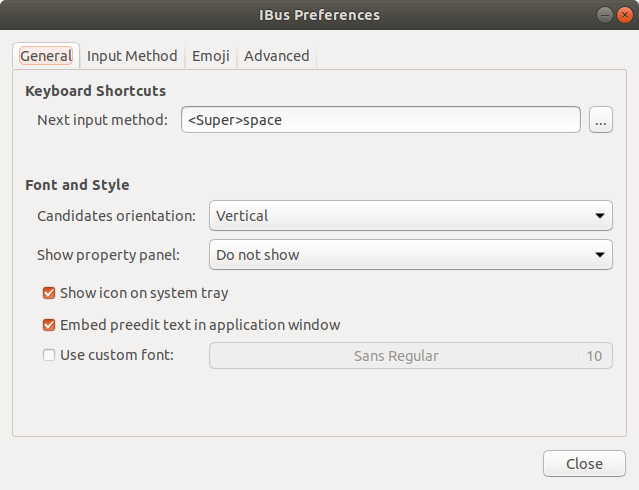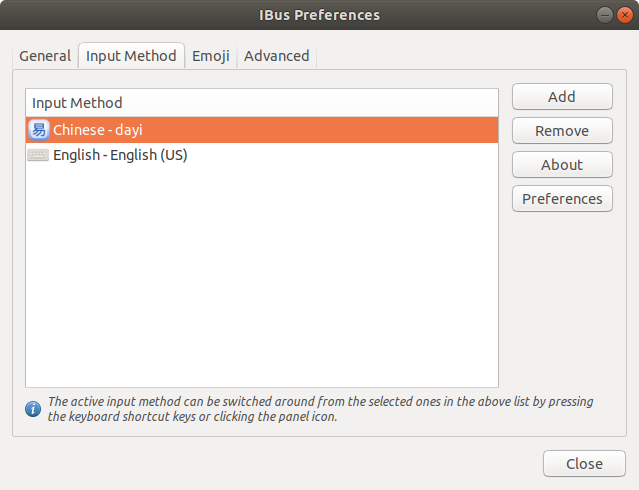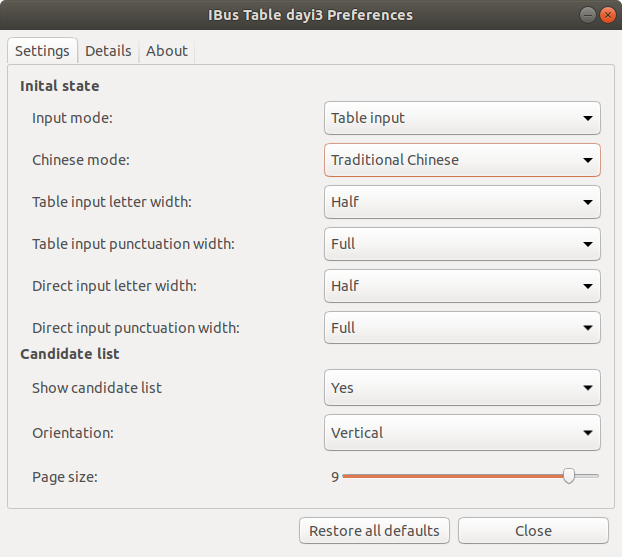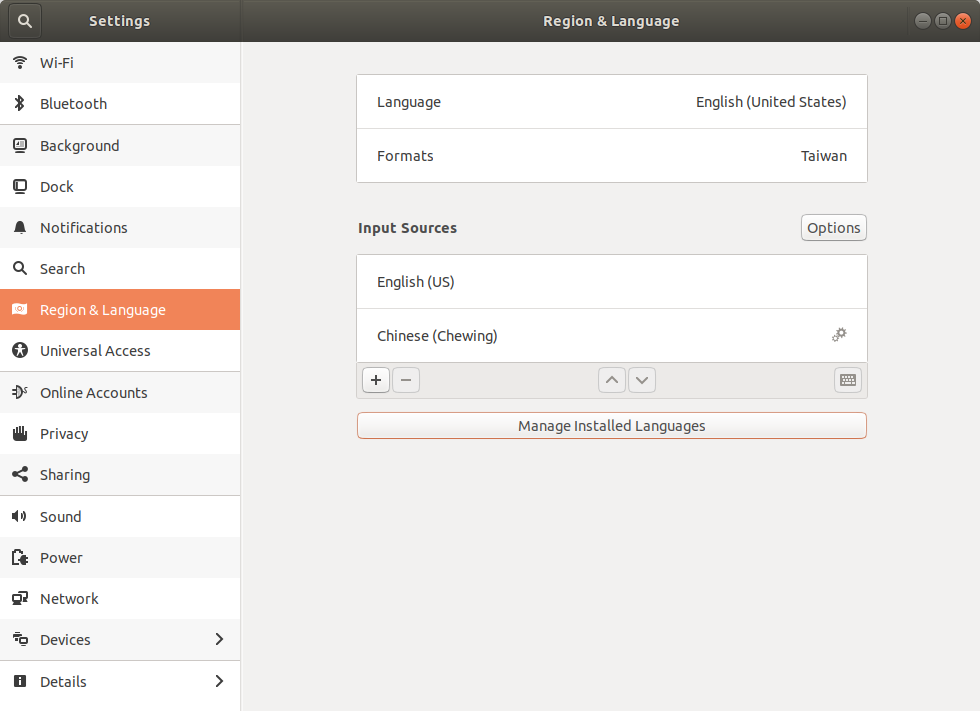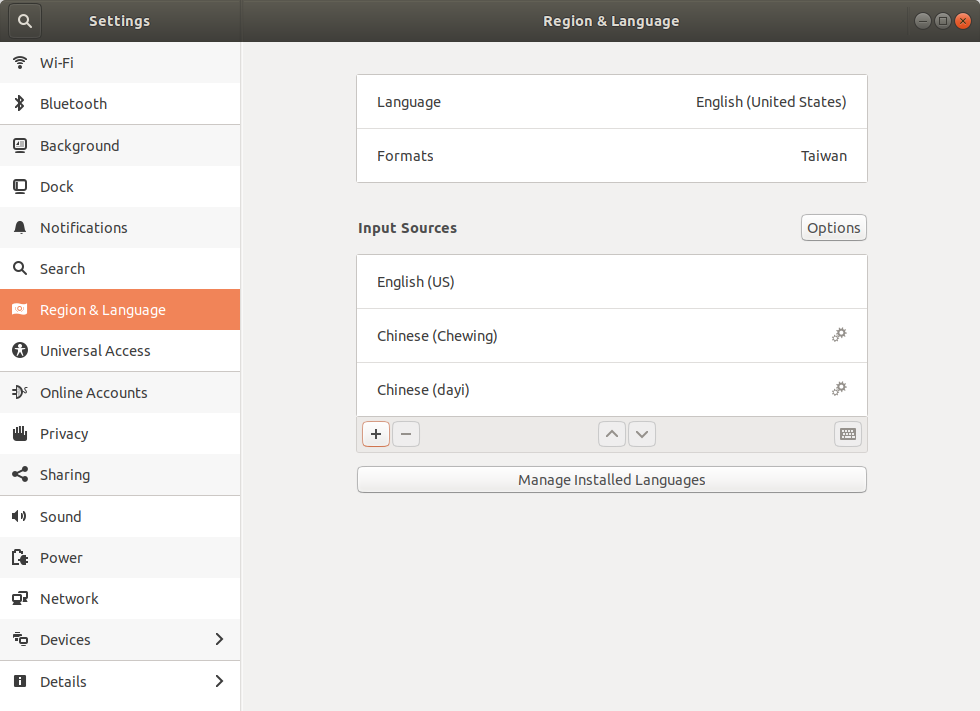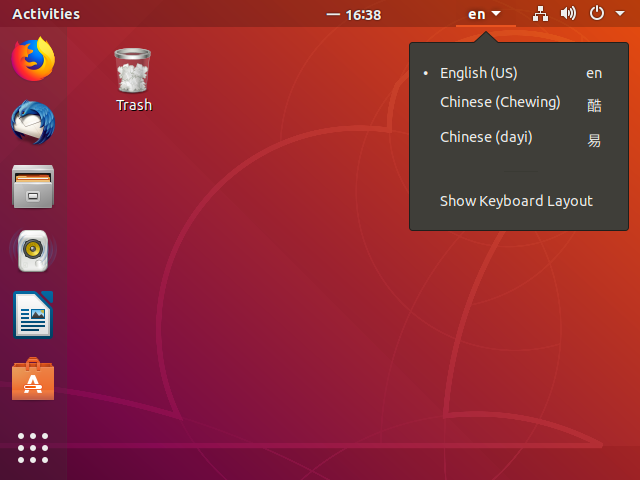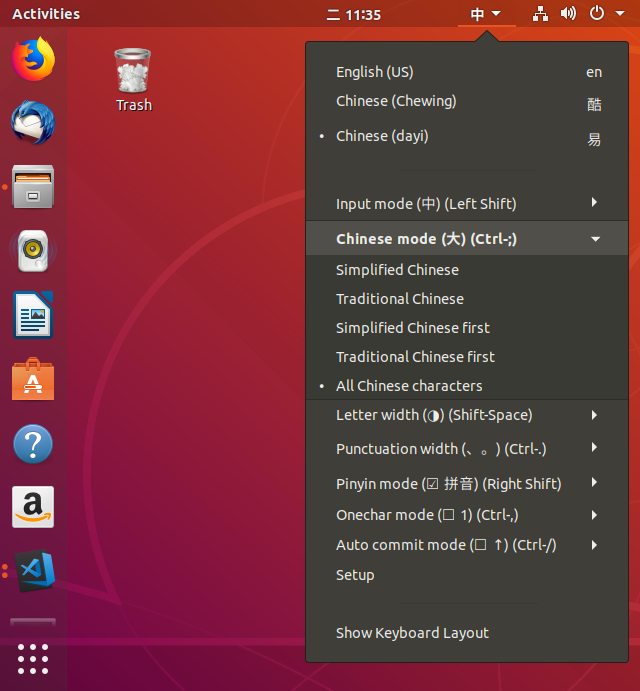markdown
# 映像檔(Image)
## 從搜尋遠端倉庫中公開的映像檔 search
```
$ docker search ubuntu
$ docker search --automated=true -s 3 ubuntu
Flag --automated has been deprecated, use --filter=is-automated=true instead
Flag --stars has been deprecated, use --filter=stars=3 instead
NAME DESCRIPTION STARS OFFICIAL AUTOMATED
dorowu/ubuntu-desktop-lxde-vnc Docker image to provide HTML5 VNC interface … 275 [OK]
rastasheep/ubuntu-sshd Dockerized SSH service, built on top of offi… 205 [OK]
consol/ubuntu-xfce-vnc Ubuntu container with "headless" VNC session… 158 [OK]
ansible/ubuntu14.04-ansible Ubuntu 14.04 LTS with ansible 96 [OK]
1and1internet/ubuntu-16-nginx-php-phpmyadmin-mysql-5 ubuntu-16-nginx-php-phpmyadmin-mysql-5 49 [OK]
nuagebec/ubuntu Simple always updated Ubuntu docker images w… 23 [OK]
1and1internet/ubuntu-16-apache-php-7.0 ubuntu-16-apache-php-7.0 13 [OK]
eclipse/ubuntu_jdk8 Ubuntu, JDK8, Maven 3, git, curl, nmap, mc, … 8 [OK]
codenvy/ubuntu_jdk8 Ubuntu, JDK8, Maven 3, git, curl, nmap, mc, … 5 [OK]
darksheer/ubuntu Base Ubuntu Image -- Updated hourly 5 [OK]
```
## 取得映像檔 pull
```
$ docker pull ubuntu
$ docker pull ubuntu:latest
$ docker pull ubuntu:18.04
```
## 查看映像檔訊息 images
```
$ docker images
REPOSITORY TAG IMAGE ID CREATED SIZE
ubuntu 18.04 47b19964fb50 4 weeks ago 88.1MB
ubuntu latest 47b19964fb50 4 weeks ago 88.1MB
```
## 增加映像檔標籤 tag
```
$ docker tag ubuntu:latest newtagubuntu:latest
$ docker images
REPOSITORY TAG IMAGE ID CREATED SIZE
ubuntu 18.04 47b19964fb50 4 weeks ago 88.1MB
ubuntu latest 47b19964fb50 4 weeks ago 88.1MB
newtagubuntu latest 47b19964fb50 4 weeks ago 88.1MB
```
## 查看詳細資訊 inspect
```
$ docker inspect ubuntu:18.04
[
{
"Id": "sha256:47b19964fb500f3158ae57f20d16d8784cc4af37c52c49d3b4f5bc5eede49541",
"RepoTags": [
"ubuntu:18.04",
"ubuntu:latest"
],
"RepoDigests": [
"ubuntu@sha256:7a47ccc3bbe8a451b500d2b53104868b46d60ee8f5b35a24b41a86077c650210"
],
"Parent": "",
"Comment": "",
"Created": "2019-02-06T03:37:51.599085524Z",
"Container": "4fcabd24a4d0668c251f05105af1d986b1841713e7af90bf51df172ecefae2fa",
"ContainerConfig": {
"Hostname": "4fcabd24a4d0",
"Domainname": "",
"User": "",
"AttachStdin": false,
"AttachStdout": false,
"AttachStderr": false,
"Tty": false,
"OpenStdin": false,
"StdinOnce": false,
"Env": [
"PATH=/usr/local/sbin:/usr/local/bin:/usr/sbin:/usr/bin:/sbin:/bin"
],
"Cmd": [
"/bin/sh",
"-c",
"#(nop) ",
"CMD [\"/bin/bash\"]"
],
"ArgsEscaped": true,
"Image": "sha256:5bbf4643e91ac20eb0ec60930e6d56e36eedab0ae09930a4bd414bb227590d28",
"Volumes": null,
"WorkingDir": "",
"Entrypoint": null,
"OnBuild": null,
"Labels": {}
},
"DockerVersion": "18.06.1-ce",
"Author": "",
"Config": {
"Hostname": "",
"Domainname": "",
"User": "",
"AttachStdin": false,
"AttachStdout": false,
"AttachStderr": false,
"Tty": false,
"OpenStdin": false,
"StdinOnce": false,
"Env": [
"PATH=/usr/local/sbin:/usr/local/bin:/usr/sbin:/usr/bin:/sbin:/bin"
],
"Cmd": [
"/bin/bash"
],
"ArgsEscaped": true,
"Image": "sha256:5bbf4643e91ac20eb0ec60930e6d56e36eedab0ae09930a4bd414bb227590d28",
"Volumes": null,
"WorkingDir": "",
"Entrypoint": null,
"OnBuild": null,
"Labels": null
},
"Architecture": "amd64",
"Os": "linux",
"Size": 88140808,
"VirtualSize": 88140808,
"GraphDriver": {
"Data": null,
"Name": "aufs"
},
"RootFS": {
"Type": "layers",
"Layers": [
"sha256:bebe7ce6215aee349bee5d67222abeb5c5a834bbeaa2f2f5d05363d9fd68db41",
"sha256:283fb404ea9415ab48456fd8a82b153b1a719491cdf7b806d1853b047d00f27f",
"sha256:663e8522d78b5b767f15b2e43885da5975068e3195bbbfa8fc3a082297a361c1",
"sha256:4b7d93055d8781d27259ba5780938e6a78d8ef691c94ee9abc3616c1b009ec4a"
]
},
"Metadata": {
"LastTagTime": "0001-01-01T00:00:00Z"
}
}
]
```
## 查看建置歷史 history
```
$ docker history ubuntu:18.04
Got permission denied while trying to connect to the Docker daemon socket at unix:///var/run/docker.sock: Get http://%2Fvar%2Frun%2Fdocker.sock/v1.38/images/ubuntu:18.04/history: dial unix /var/run/docker.sock: connect: permission denied
alger@ocr:~$ sudo docker history ubuntu:18.04
IMAGE CREATED CREATED BY SIZE COMMENT
47b19964fb50 4 weeks ago /bin/sh -c #(nop) CMD ["/bin/bash"] 0B
4 weeks ago /bin/sh -c mkdir -p /run/systemd && echo 'do… 7B
4 weeks ago /bin/sh -c rm -rf /var/lib/apt/lists/* 0B
4 weeks ago /bin/sh -c set -xe && echo '#!/bin/sh' > /… 745B
4 weeks ago /bin/sh -c #(nop) ADD file:529264c6593975a61… 88.1MB
```
## 刪除映像檔 rmi
```
$ docker images
REPOSITORY TAG IMAGE ID CREATED SIZE
ubuntu 18.04 47b19964fb50 4 weeks ago 88.1MB
ubuntu latest 47b19964fb50 4 weeks ago 88.1MB
$ docker rmi ubuntu:latest
$ docker rmi 47b19964fb50
```
## 建立映像檔 commit
### 1. 從現有映像檔建立
步驟是先啟動一個映像檔,在其中進行修改操作,然後退出;再來使用 commit 命令建立一個新映像檔。
```
$ sudo docker run -it ubuntu:18.04 /bin/bash
root@f4aa7204185f:/# cd ~
root@f4aa7204185f:~# ls
root@f4aa7204185f:~# touch test
root@f4aa7204185f:~# exit
exit
$ sudo docker commit -m "Added a new file" -a "cww" f4aa7204185f test:0.1
sha256:15917e0e189ccb879ef19989046f132b2ddadd1ddb0674ce397baafe6951e9d7
```
commit 的選項:
* -a, --author="": 作者資訊
* -c, --change=[]:commit 的時候執行 Dockerfile 指令,包括 CMD|ENTRYPOINT|ENV|EXPOSE|LABEL|ONBUILD|USER|VOLUME|WORKDIR 等
* -m, --message="":新增訊息
* -p, --pause=true:commit 時暫停容器運作
### 2. 基於 Linux 容器 (LXC) 範例匯入
docker import [OPTIONS] file|URL|-[REPOSITORY[:tag]]
使用 OpenVZ 提供的範本來建立,OpenVZ 的範本下載位址 http://openvz.org/Download/templates/precreated
```
$ cat ubuntu-18.04-x86_64-minimal.tar.gz | docker import - ubuntu:18.04
或
$ docker import http://download.openvz.org/template/precreated/ubuntu-18.04-x86_64-minimal.tar.gz ubuntu:18.04
```
然後查看新匯入的映像檔,會看到已存在本地端了。
```
$ docker images
```
## 儲存和載入映像檔 save & load
本機上的 ubuntu:18.04 映像檔儲存為 ubuntu_18.04.tar 檔案
```
$ docker save -o ubuntu_18.04.tar ubuntu:18.04
```
載入映像檔,將儲存的 tar 檔案匯入本機的映像檔中
```
$ docker load --input ubuntu_18.04.tar
或
$ docker load < ubuntu_18.04.tar
```
> 可以透過 ssh 將映像檔傳送到遠端伺服器
>$ sudo docker save ubuntu:latest | ssh user@remote-server sudo docker load
## 上傳映像檔 push
指令語法
> docker push NAME[:TAG] | [REGISTRY_HOST[:REGISTRY_PORT]/]NAME[:TAG]
### dockerhub
先在[docker hub](https://cloud.docker.com/)註冊帳號,我這裡注冊的名稱是 `alger23`,然後用命令方式登入
```
$ docker login
Login with your Docker ID to push and pull images from Docker Hub. If you don't have a Docker ID, head over to https://hub.docker.com to create one.
Username: alger23
Password:
Login Succeeded
```
然後透過以下命令上傳映像檔到 docker hub 倉庫中
可先在 docker hub 網頁操作建立 Repository 後上傳到倉庫。
也可以不在網頁上建立倉庫,直接上傳。這裡先把要上傳的 test:映像檔建立新的 tag 名稱 `alger23/test:0.1`,然後再將用 push 指令上傳到倉庫。
```
$ docker tag test:0.1 alger23/test:0.1
$ docker push alger23/test:0.1
```
# 容器 (Container)
## 查看容器 ps
查看本機上存在的所有容器
```
$ docker ps -a
CONTAINER ID IMAGE COMMAND CREATED STATUS PORTS NAMES
f4aa7204185f ubuntu:18.04 "/bin/bash" 2 hours ago Exited (0) 2 hours ago epic_keller
```
```
$ docker container ls -a
CONTAINER ID IMAGE COMMAND CREATED STATUS PORTS NAMES
f4aa7204185f ubuntu:18.04 "/bin/bash" 2 hours ago Exited (0) 2 hours ago epic_keller
```
## 建立容器 create
```
$ docker create -it ubuntu:18.04
192aa1379e21446c1b2668fdb32bca24fef0dee2d847ed2afe84231cede38559
```
使用 docker create 命令建立的容器處於停止狀態,可以使用 docker start 指令來啟動它。
```
$ docker container ls -a
CONTAINER ID IMAGE COMMAND CREATED STATUS PORTS NAMES
192aa1379e21 ubuntu:18.04 "/bin/bash" 11 seconds ago Created infallible_bohr
$ docker start 192aa1379e21
192aa1379e21
$ docker container ls -a
CONTAINER ID IMAGE COMMAND CREATED STATUS PORTS NAMES
192aa1379e21 ubuntu:18.04 "/bin/bash" About a minute ago Up 55 seconds infallible_bohr
```
## 建立並啟動容器 run
利用 Image ubuntu:18.04 執行文字輸出
```
$ docker run ubuntu:18.04 echo 'hello!'
hello!
```
添加 -d 參數讓容易背景執行
```
$ docker run -d ubuntu /bin/sh -c "while true; do echo hello world; sleep 1; done"
264a8dce7deb5de83dcd3f198b56d1cba169988e6f1c214f43020633261e271c
```
要查看容易的輸出資訊
```
$ docker log 264a8dce7
hello world
hello world
...
```
## 停止容器 stop
```
$ docker stop 264a8dce7
```
## 重啟容器 restart
```
$ docker restart 264a8dce7
```
## 進入容器進行操作
### 1. attach
> 指令格式
> docker attach [--detach-keys[=[]]] [--no-stdin] [--sig-proxy[=true]] CONTAINER
使用範例
```
$ sudo docker run -itd ubuntu
b210e0160499a48494c0f0e04b5b927cd62477c2122ff66121ef3b64d0776b99
$ sudo docker ps
CONTAINER ID IMAGE COMMAND CREATED STATUS PORTS NAMES
b210e0160499 ubuntu "/bin/bash" 6 seconds ago Up 4 seconds condescending_payne
$ sudo docker attach condescending_payne
root@b210e0160499:/#
```
使用 attach 指令有時候並不方便,當多個視窗同時用 attach 到同一個容器時,所有視窗都會同步顯示。當某個視窗因命令雍塞時,其它視窗也無法執行操作。
### 2. exec
Docker 1.3.0 版起提供 exec 指令,可以在容器內直接執行任意命令
> 指令格式
> docker exec [-d|--detach] [--detach-keys[=[]]] [-i|--interactive] [--privileged] [-t|--tty] [-u|--user[=USER]] CONTAINER COMMAND [ARG...]
例如
```
$ docker exec -it b210 /bin/bash
root@b210e0160499:/# exit
```
### 3. nsenter
在 util-linux 套件版本 2.23 之後包含 nsenter 工具。
要使用 nsenter 連接到容器,需要容器程序的 PID,透過以下指令取得:
> PID=$(docker inspect --format "{{ .State.Pid }}" )
完整範例
```
$ docker ps
CONTAINER ID IMAGE COMMAND CREATED STATUS PORTS NAMES
b210e0160499 ubuntu "/bin/bash" 28 minutes ago Up 18 minutes condescending_payne
$ docker inspect --format "{{ .State.Pid }}" b210e0160499
18903
$ nsenter --target 18903 --mount --uts --ipc --net --pid
root@b210e0160499:/#
```
查看使用者和程序資訊
```
root@b210e0160499:/# w
07:04:48 up 20:35, 0 users, load average: 0.01, 0.01, 0.00
USER TTY FROM LOGIN@ IDLE JCPU PCPU WHAT
root@b210e0160499:/# ps -ef
UID PID PPID C STIME TTY TIME CMD
root 1 0 0 06:44 pts/0 00:00:00 /bin/bash
root 26 0 0 07:03 pts/0 00:00:00 -bash
root 32 26 0 07:05 pts/0 00:00:00 ps -ef
```
## 移除容器
> docker rm [-f|--force] [-l|--link] [-v|--volumes] CONTAINER [CONTAINER...]
* -f, --force=false: 是否強制停止並刪除執行中的容器
* -l, --link=false: 刪除容器連接,但保留容器
* -v, --volumes=false: 刪除容器掛載的 volume
```
$ docker container rm f4aa7204185f
f4aa7204185f
或
$ docker rm f4aa7204185f
f4aa7204185f
```
## 匯入和匯出容器 import & export
要將容器搬遷至另一個系統時可以使用Docker 的匯出和匯入功能。
### 1. 匯出容器 export
> docker export [-o|--output[=""]] CONTAINER
範例
```
$ docker ps
CONTAINER ID IMAGE COMMAND CREATED STATUS PORTS NAMES
b210e0160499 ubuntu "/bin/bash" 41 minutes ago Up 31 minutes condescending_payne
$ docker export -o test.tar b210
或
$ docker export b210 > test.tar
```
### 2. 匯入容器 import
> docker import [-c|--change[=[]]] [-m|--message[=MESSAGE]] file|URL|-[REPOSITORY[:TAG]]
```
$ cat test.tar | docker import - test/ubuntu:123
```
# 倉庫 (Repository)
## 搜尋
```
$ docker search ubuntu
```
